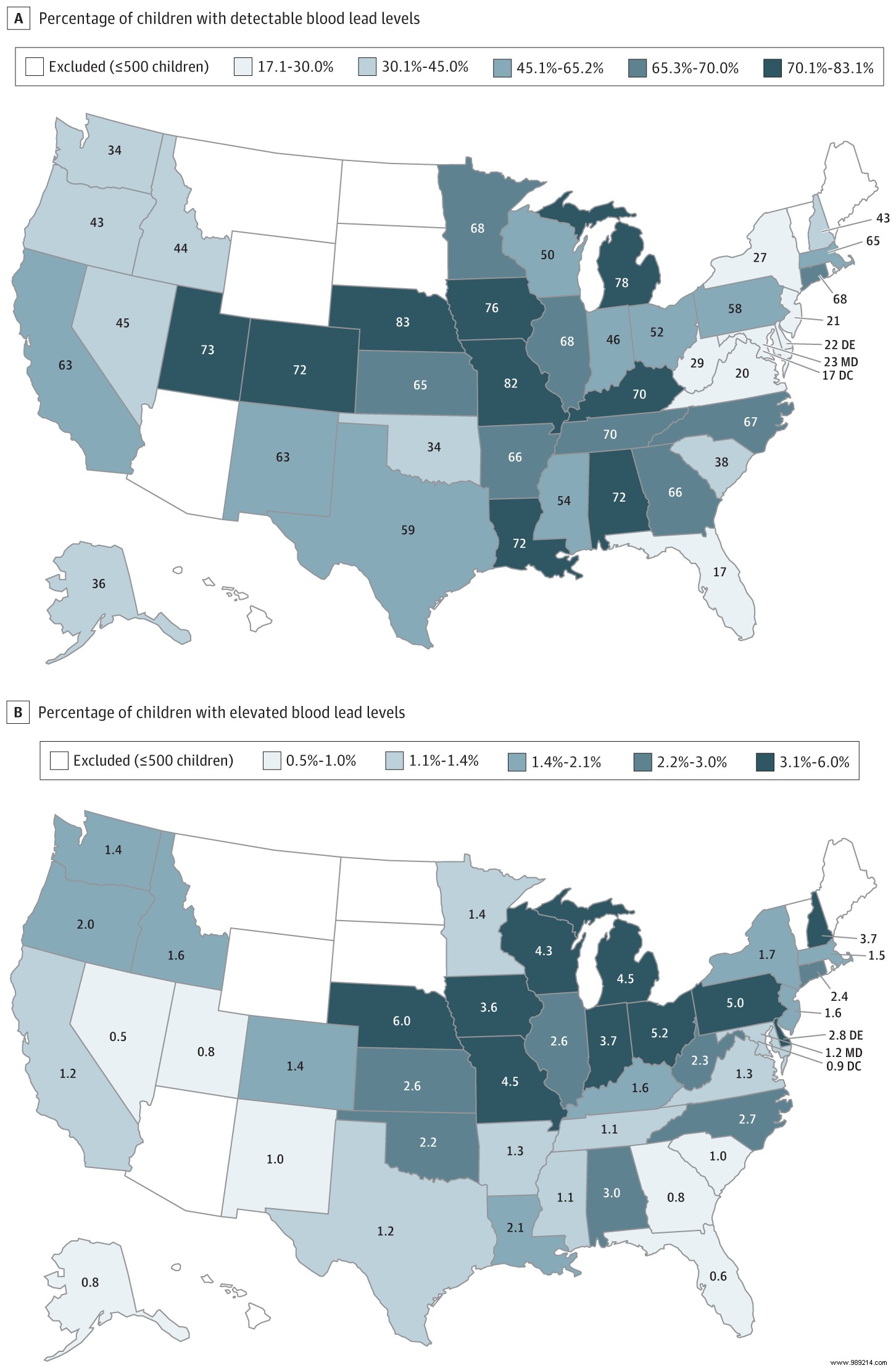In about 50 states in the United States, doctors have carried out numerous blood tests on children. However, half of these children had "detectable blood lead levels" in their blood. How should the results be interpreted?
Lead is the chemical element with atomic number 82 (Pb), a malleable metal that is inexpensive and highly resistant to corrosion. However, it is toxic to humans , even at low doses. A few months ago, for example, we reported a very interesting video questioning the possibility that lead may have played an important role in the fall of the Roman Empire in 476 AD. J.-C..
You should know that even in 2021, the lead sometimes comes back into the light. A study published in the journal JAMA Pediatrics on September 27 describes the results of blood tests carried out on 1.14 million children under the age of six between October 2018 and February 2020. These were selected from around fifty states in the United States. According to the results, more than half of these children had “detectable blood lead levels “.
Children's Hospital Boston, Department of Anesthesiology, Pain Management, and Perioperative Medicine at the University of Miami, and Harvey Kaufman, Senior Medical Director at Quest Diagnostics Inc. is surprised that the presence of lead in the blood affects so many children.

The study should be put into perspective somewhat insofar as only 2% of children in the study had a blood lead level considered to be elevated. For the others, it is not a question of large quantities. However, scientists say there is no safe level of exposure to lead and they say there is no acceptable level , except level zero.
Also remember that in young growing children, lead can cause irreversible damage . By affecting the brain and nervous system, this toxic metal can cause lifelong learning, speech, hearing and behavior problems. It should be noted that in most cases, lead is found in the pipes carrying drinking water as well as in the painting of old houses.
The study also highlights the fact that there is a link between lead exposure and poverty . In the United States, the older homes and other dwellings most exposed to the toxic metal are home to mostly African-American and Hispanic populations. Furthermore, doctors indicated that progress had already been made to avoid pediatric lead exposure, but that substantial disparities at the individual and community level always persist.